While You Slept, the World Changed: Answering 12 Important Questions About House of X and Powers of X
The journey has come to an end. House of X and Powers of X are complete. Jonathan Hickman, Pepe Larraz, RB Silva, Marte Gracia, Clayton Cowles, Tom Muller and friends delivered an unforgettable story, and one that certainly commanded a level of attention we rarely see in the comic conversation these days. They were a dominant force, turning each Wednesday into the land of #XSpoilers on Twitter until you were able to read the comics, at which point you immediately want to talk about them because they compelled you to do so.
And now it’s time for the Dawn of X. There’s no rest for the merry mutants as X-Men #1 is launching this Wednesday. But before we get into that, I wanted to take a minute and look back on these two titles and 12 issues, as let’s be honest: they were a lot. I contemplated writing a traditional review for these titles, but there’s much more to consider than anything like that can really deliver. This was a beast that contained multitudes, and if I wrote about everything I wanted to write about, it’d feel schizophrenic in review form. So instead, let’s examine these two series that were really one by answering 12 important questions about them, or one for each issue that was released. Let’s get to it.

Who was the MVP of the series character wise and creator wise – if you don’t include Hickman?
When I was rereading the series for the seemingly 500th time, I tried very hard to find a character to pick as the MVP that wasn’t Moira. Professor X was obviously a big deal. Magneto was too, and he was always cool while doing it. Cypher was an essential part, and Sinister was undoubtedly the Most Fabulous Player. Namor had the highest rate of killer moments per page because everything he said was amazing and he was in the comic for precisely one page. Nimrod the Lesser was the most entertaining character, and Rasputin was the coolest new cast member. Not to be outdone, Emma Frost was 100% the coolest overall.
But it has to be Moira, right? There is a very strong case you can make that Moira is now the most important character in the entirety of the Marvel universe. Think about it. Moira is now a one character path to an entire line relaunch, and god only knows Hickman has one in his system at all times. I don’t think that’s what is going to happen. He’s already played that trick, and as much as he likes nod back to previous beats, that’s a substantial amount of recall. But it’s a fascinating escape hatch he’s built in for Marvel as a whole.
Plus, she’s now the orchestrator behind not just the current state of the X-Men but also effectively the entirety of their history. In fact, that’s arguably the biggest takeaway from this whole exercise, and that’s that Moira has been repositioned as the fourth pillar that holds up the building the X-Men franchise resides in. 1 Xavier might be the Alpha and Magneto may be the Omega, but Moira is the puppet master behind everything, a position that overrides the others.
Quick note: If Moira is the MVP, then the shadow MVP has to be Destiny, a character whose looming presence – despite being actually dead! 2 – is the one thing Moira seemingly fears and the one thing that could trigger the collapse of everything the mutants are doing besides the rise of post humanity, or homo novissima as you might call them if you were fancy.
As for the MVP creator beyond Hickman, who is the obvious pick, I’m going to cheat and give Pepe Larraz and RB Silva the top spot as a tie. These are two books that are one, and these two artists did everything they needed and more to make these titles feel that way. Even better, they both seemingly come from the Immonen school of art, and while they had their own look and feel, it was similar enough that they complemented each other nicely. Larraz and Silva were already A-listers in my heart, but now they’re A-listers in reality. Hire these men for your comic books.
The sleeper choice, though, is Marte Gracia. Gracia’s colors were the unifying visual element to the whole traditional comic part of the story. Without his colors, this whole thing doesn’t look as consistent visually. That was necessary for it to work. Larraz and Silva might be the right picks, but Gracia has a claim as well.

Okay, that was an obvious character to pick. Let’s phrase that differently. Excluding the previous pick, which character was the most improved from where they were before to their current state?
If we exclude Moira, who went from a dead person in continuity to the most important character in Marvel comics from a potential impact standpoint – a healthy delta in terms of character relevance if there ever has been one – then we see a vast sea of opportunity because this puppy was loaded with ascension, and not just of the Phalanx variety. There are plenty of choices here, but I’m going to go with a character who also previously had been dead or unimportant, 3 and that’s Doug Ramsey – aka Cypher – a character that mostly made me think of another character 4 on the rare occasion I did think of him.
Ol’ Dougie is now the straw that stirs the Krakoan drink, as Hickman found a way to actually fully utilize Cypher’s language abilities by pairing him with the X-Men’s new home. He’s the one that makes that whole place work, he created the mutant language, and he’s the only one that can collaborate with Krakoa. That by itself makes him an essential part of this story in a way he has never truly been in the past. But when you factor in Doug infecting Krakoa with the Transmode virus and how the Phalanx and other, larger, related organisms like Dominions and Titans loom large – making Doug a key player in those future stories – you have an even bigger potential going forward.
Cypher wasn’t much of a deal before. Now he’s a big deal. He has well and truly ascended, even if it could lead to hard times in the future for our guy Doug.
Second place goes to Goldballs.
:no_upscale()/cdn.vox-cdn.com/uploads/chorus_asset/file/18369225/POWERSOFX2019001_int_30_copy.jpg)
How would you rank the Powers of X timelines?
I’d rank them in the only reasonable way to rank them. Here they are in reverse order, worst to first, so to speak, even if that’s not accurate because I liked all four.
X 3. Year One Thousand (Ascension): The whole Phalanx/Ascension story was one that had a lot of spice to it, with high highs – it’s where we learn the hammer point of the whole series – and the biggest heat check in the Phalanx and Dominion stuff. 5 But fittingly for the story set the furthest in the future, this storyline feels like it was the most about where we’re headed rather than where we are now, even if it was the much bandied about sixth timeline for Moira. Hickman’s not someone who just casually disregards Chekov’s Gun. If something shows up that’s as substantial as the expansion of those universal concepts – to the point he busts out the Kardashev Scale to contextualize them – it’ll come back. But that’s about tomorrow. Today, this timeline was the least interesting one, even if it was still fascinating.
X0, Year One (The Dream): As much as it pains me to not have the whole Bar Sinister sequence represented higher on this list, Year One itself was heavily built around “the most important scene in X-Men history” between Moira and Xavier. While it was objectively important – as was its partner in the form of Moira’s reveal to Magneto – it wasn’t as subjectively entertaining as the others. That’s enough for third place but no higher than that.
X1, Year Ten (The World): This probably should be third, as much of it is designed to establish the interconnectivity between the two titles. Yet it gets second because of the Cypher sequence that finds Ramsey familiarizing himself with Krakoa, the Emma section where she establishes herself as a key player, the Moira stuff that wraps the whole series up, and most importantly, the stone cold killer of a scene featuring Namor. It’s maybe not as important as the others, but there is some exceptional character work that keeps the ball rolling overall.
X2, Year One Hundred (The War): The timeline to end first, Year One Hundred was certainly the most exciting one as well as the one that had arguably the second biggest impact overall. It was Moira’s ninth life, and the one that found the squad discovering when Nimrod first came to be, empowering the X-Men in her tenth life. Most importantly, it featured the Chimera mutants Mister Sinister created, which very well may have been the coolest idea from the whole endeavor. Also cool: Xorn’s last moment, the first Rasputin fight, everything Apocalypse does, and, oh yeah, the GOAT that is Nimrod the Lesser. My man! I can’t talk about Year One Hundred without mentioning The Notorious NtL because he is the best. All of that combined makes this my favorite timeline, hands down.

Which big moment from the series worked the best?
When I say big moments, I mean the ones that are designed to be the hammers that reveal something big or operate as game changers for something in the story, or the ones that are just notable well done because you gotta respect the narrative hotness. The way I see it, each issue had at least one, with most issues having multiple of them. Here they are in full.
- Charles Xavier enters the pharmaceutical industry
- Orchis is revealed
- Magneto telling diplomats from around the world “You have new gods now.”
- Rasputin attempts to save Cylobel
- Moira is revealed as a mutant
- Destiny and Moira face off
- Pick a moment depicting really any of Moira’s lives
- Apocalypse is revealed as the leader of the remaining X-Men in Year One Hundred
- The Phalanx arrive
- Rasputin removes Xorn’s mask
- Wolverine kills Moira after feeding her Nimrod’s origin
- Erasmus blows himself up on The Forge in an attempt to take out the boarding X-Men
- Wolverine and Nightcrawler sacrifice themselves to send the Mother Mold into the sun
- The Mutant Sinister takes over
- Cypher tells the tale of Krakoa and Arakko
- The Five are revealed
- The villains submit to the X-Men at Krakoa
- Emma joins the squad
- Namor doesn’t join the squad
- The Quiet Council meets for the first time
- There might be an orgy
- We find out the mutants always lose
Okay, that’s a lot. But those are the ones I determined were absolutely essential beats for one reason or another. Not bad for twelve issues! But let us eliminate the obvious ones before we move further.
As much as I loved Sinister’s appearance, I can’t pick that. Emma joining and Namor not joining were fantastic, but several orders of magnitude down in importance. I’m certainly pro orgy, but it’s hardly essential. Erasmus’ self-sacrifice was a traditional issue conclusion, which made it fine but not transcendent. Xavier + Big Pharma and Orchis being revealed was immense and cool, but not much compared to the rest. Moira’s reveal as a mutant was important, but less so than the other beats from that issue, and the varying lives of Moira are incredible but less a moment and more what had to happen there. 6 The Apocalypse reveal, the Phalanx’s arrival, the Quiet Council’s first meeting, any time Wolverine killed Moira, and the villains submitting…those are all out. The biggest initial cut ends up being finding out the mutants always lose, for reasons we’ll cover later on. That leaves us with the following.
- Magneto telling diplomats from around the world “You have new gods now.”
- Rasputin attempts to save Cylobel
- Destiny and Moira face off
- Rasputin removes Xorn’s mask
- Wolverine and Nightcrawler sacrifice themselves to take out the Mother Mold
- Cypher tells the tale of Krakoa and Arakko
- The Five are revealed
Now things get difficult. The first cuts are both Rasputin scenes. As rad as they are, they split the vote and are out. The Five reveal was mind-blowing and massively important, but I would say it was more well-conceived than remarkably executed. 7 The whole Krakoa and Arakko bit was incredible and will be important going forward, I’d wager. The whammy wasn’t fully there, though. That leaves a top three, and because I’m nothing if not committed to completing a power rankings, let’s rank those below.
- Destiny and Moira facing off: This felt like a foundational moment for the entire series, it was perfectly executed, and it was just an unbelievably clever establishment of a counter-balance to Moira’s newly found powers
- “You have new gods now.”: The final beat to House of X #1 almost acted as a mission statement for everything to come, and it was just an unbelievably potent moment
- Wolvie + Kurt sacrifice themselves: My two favorite proper X-Men – and two characters with a long, well-established relationship – giving their lives for the greater good was beautifully handled, even if it was almost immediately reversed
/cdn.vox-cdn.com/uploads/chorus_asset/file/19259219/p26.jpg)
Did House of X’s pivotal month in the history of the X-Men end in an orgy?
Yes.
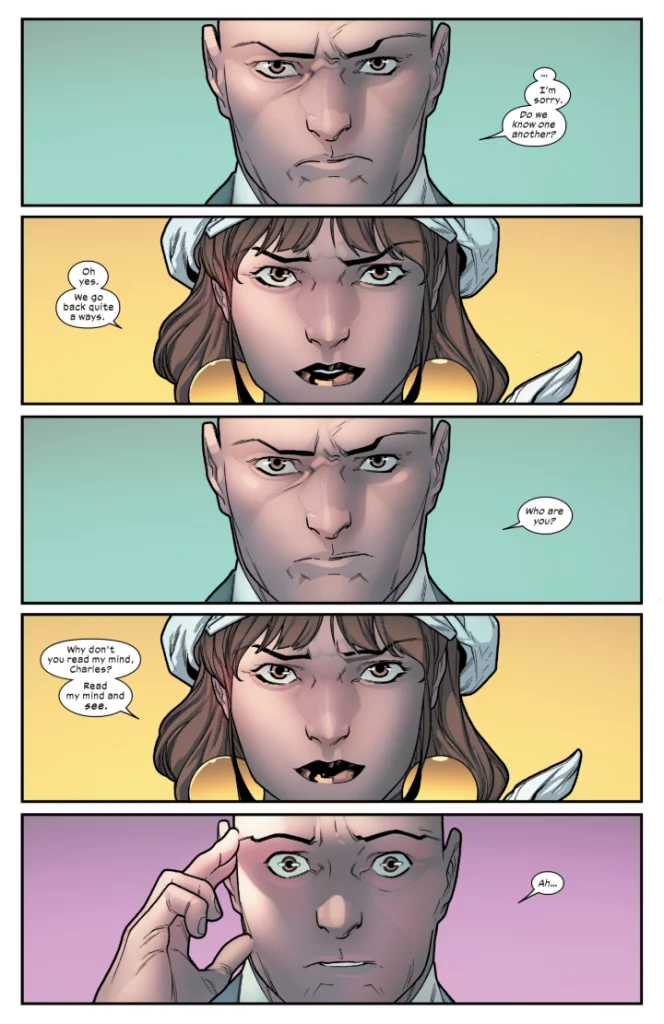
Was repeating the same scenes – like Moira and Charles’ conversation, the celebration at the end, the “To Me, My X-Men” – an effective method to deliver story in an impactful way?
After finishing Powers of X #6, there was a part of me that was turned off by how much of the issue was a repeat of previous scenes, most notably the entire “most important scene in X-Men history” tête-à-tête between Moira and Charles. I was reading the issue for payoff. It was a red issue! Having what felt like a quarter of it dedicated to playing back that scene and other beats from House of X #6 felt wasteful initially.
But after rereading the whole series, those two scenes as well as well as other repeats work far better because each of these echoes give us a little taste more than we had before. Earlier they were mysteries. Beats that seemed important but we didn’t know why. There were additional layers worked in each time they returned until everything stood revealed, giving us the full picture when once we only saw snippets. In the moment, it could feel wasteful and frustrating, especially in the last issue. When rereading it, you realize it was the only way to give surrounding moments the weight they required while providing necessary contextualization.
Long story short, yes, it is effective, even if initially it didn’t totally work for me.
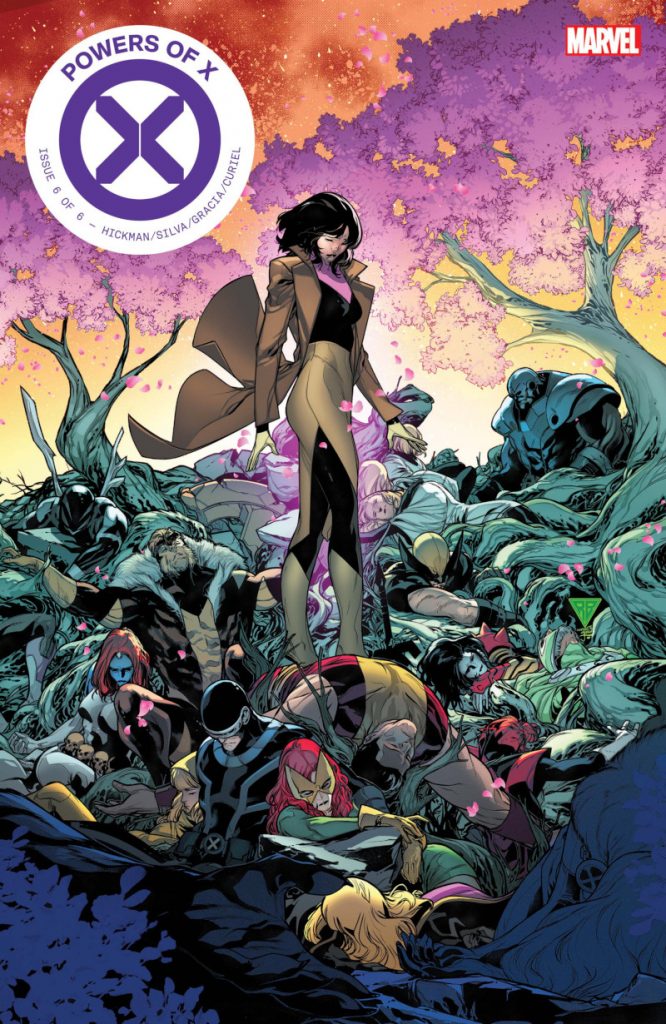
Is it okay that the last issue felt like one of the least impactful ones?
It wasn’t just the repeated scenes in Powers of X #6 that didn’t hit me as hard as I hoped. The whole issue felt…a bit light, with my initial read leaving me wanting something – anything! – more. The whole time I was reading this series, it felt like we were building, building and building to somewhere immense, and despite the big reveal being objectively huge – the mutants always lose – it was almost like there was an absence there. I liked the issue. But I was initially disappointed all the same. I didn’t even really know why. It was an effective issue with significant beats throughout. It worked in the same way as previous issues. And yet it also didn’t.
I had a breakthrough as I was brushing my teeth this past weekend, which feels relevant because it’s apparently one of the few times I shut my brain off. In the midst of the interminable span of time my Sonicare brush asks of me, it hit me why this was. It’s an inversion of the reason these comics were such sensations. As the series built, it felt like anything was possible. All we had were questions, and our hypotheses made for endlessly exciting prospects. It’s the Pulp Fiction Briefcase premise. There’s no answer that will ever be as interesting as the questions that we ask ourselves about a mystery. 8 Questions are infinite, but answers…answers are final. They’re incontrovertible. In the moment of the sixth timeline reveal, it became real. And sometimes reality just isn’t as interesting as possibility. It can be less interesting to know.
That doesn’t mean the issue failed, of course. It works and works well, especially upon rereading it. Even beyond that, this issue wasn’t meant to be a conclusion in the traditional sense. It wasn’t a period. It’s an ellipsis — a transitional element meant to finalize the establishment of a new status quo and to send us on our merry way. I’d say it was one of the least impactful issues by design, although some may take that statement as evidence of how in the bag for Johnny Hicks I am. That may be true.
But both can be true at the same time.
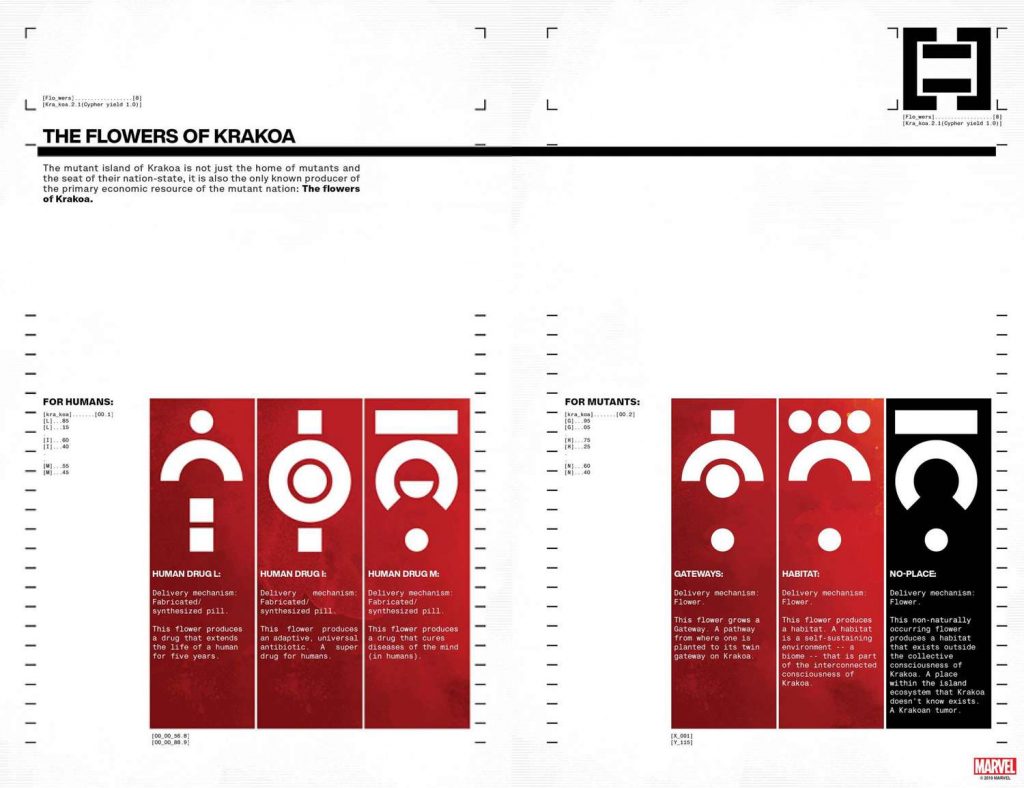
What should comic publishers take away from the success of these books?
If I were a comic publisher, I would be studying everything that happened over this 12 week period, doing what I could to deconstruct what made these titles not just a success, but the first titles in a long time that inspired a constant comic book conversation. Some elements can’t be recreated. DC or BOOM! or whomever can’t just release X-Men comics. 9 Jonathan Hickman is clearly going to be busy for a bit. These are non-repeatable factors.
There are other things that can be learned, though, and they’re items that I think could contribute to unlocking the next water cooler comic of sorts, if they’re employed.
The first is that empowering your creators to do something bold and different can prove valuable. While this primarily works at the Big Two – creator-owned comics are obviously going to be what they are, and licensed work has a certain level of extra oversight even above what publishers say – it’s a lesson we’ve seen learned time and time again yet so much of what we see in floppy comics are variations on the same formula. The biggest, most lasting comics tend to be the ones that weren’t afraid of breaking things, and House of X and Powers of X fit that idea perfectly. They succeed because wholesale changes are made and a new status quo is formed. People are excited by something that feels new, not a variation on an existing formula. Not every creator is Jonathan Hickman, of course. But if given the chance, many creators could find something more than the varying flavors of vanilla we’re often fed.
Related to that: not every comic has to have the same format, the same release schedule and the same look and feel. HoX and PoX worked at least in part because they felt different and because they were coming at a rate that made us as readers feel like we were always part of something bigger. 10 Too often comics are the way they are because that’s the way they always have been or because that’s the best way to maximize profits. But when you look at varying successes from throughout comics – Unbeatable Squirrel Girl and its footnotes, The Walking Dead and black and white art, Saga and its atypical schedule, 11 etc. – you realize that those unique elements are likely part of what makes them work as well as they do. It’s a simple idea. If all that’s available to you are apples, you’ll probably take an orange when presented. Different can be good, if there’s a reason for it.
And here’s a big one for me. Pepe Larraz and RB Silva churned out 12 issues in 12 weeks combined, all of which was with the same colorist, Marte Gracia. Larraz and Silva are two artists that have similar styles and feels to their art. As noted before, they feel like they’re from the Stuart Immonen school. Because of the selection of those two artists, both titles felt like they were part of the same family. There were no jagged breaks. Typically, I’d expect something wild like going from Sara Pichelli to Szymon Kudranski, a transition that is incredibly tough on readers and once happened on the Miles Morales Spider-Man series from 2016. So the Larraz/Silva duo was wondrous comparatively. I would love it if Marvel in particular saw the success of this book and decided, “Maybe we should try to have artists with complementary art styles work on the same title more often?”
I’ll be very interested to see how the Dawn of X books work after their first arcs, because even I – a Hickman truther – could see myself dropping the main X-Men title if we go from Leinil Yu to Rob Granito or something. Hickman’s shown that a holistic approach to visuals can make a huge difference, and I hope that idea is a consideration going forward. 12
Lastly, the least likely to be adopted lesson, which is really saying something. A huge part of these titles taking over the comic conversation as they did was because they were the entire X-Men line while they were running. Each week, we had one issue to focus on, and each gave us plenty to dive into. That made things easy. The way we usually see things done would be like if Game of Thrones – another water cooler hit – wasn’t a single show but six different ones that air each week, with each focused on a different part of the world. 13 Splintering a core concept makes it harder for any single idea to stand out. There’s power in numbers, for sure. But when it comes to narratives, it might be better if that number is a low one. Not every line needs eight titles. I’d love to see Marvel test this theory with other parts of its line, because I think this is a huge part of what made HoX/PoX work.
Of course, there’s also the question of “what are publishers more likely to learn from this?” That’s something much different.
“If we release comics faster and with a higher cover price, we’ll make more money quicker!”
I somewhat kid, but this reminds me of when Into the Spider-Verse came out and a friend of mine told me that they wished that every comic movie was done in the same animation style. That would be cool looking, but Spider-Verse popped in part because it was different, not because it looked the way all comic movies should. I could very easily see publishers locking onto the surface attributes as reasons for the success of these titles, rather than the hard truths they likely revealed. We’ll see, though.
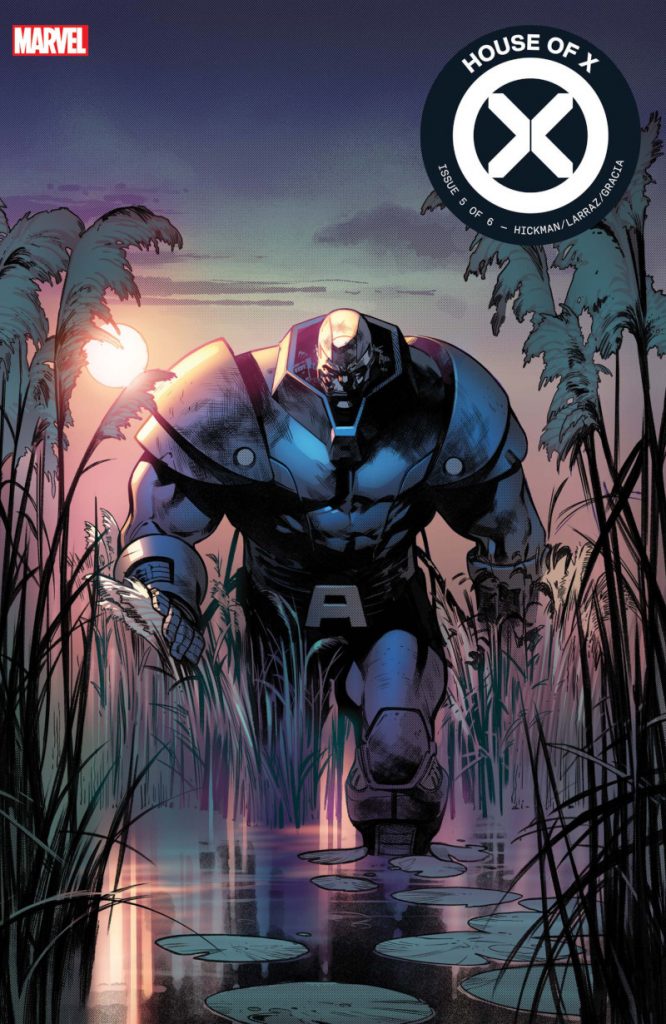
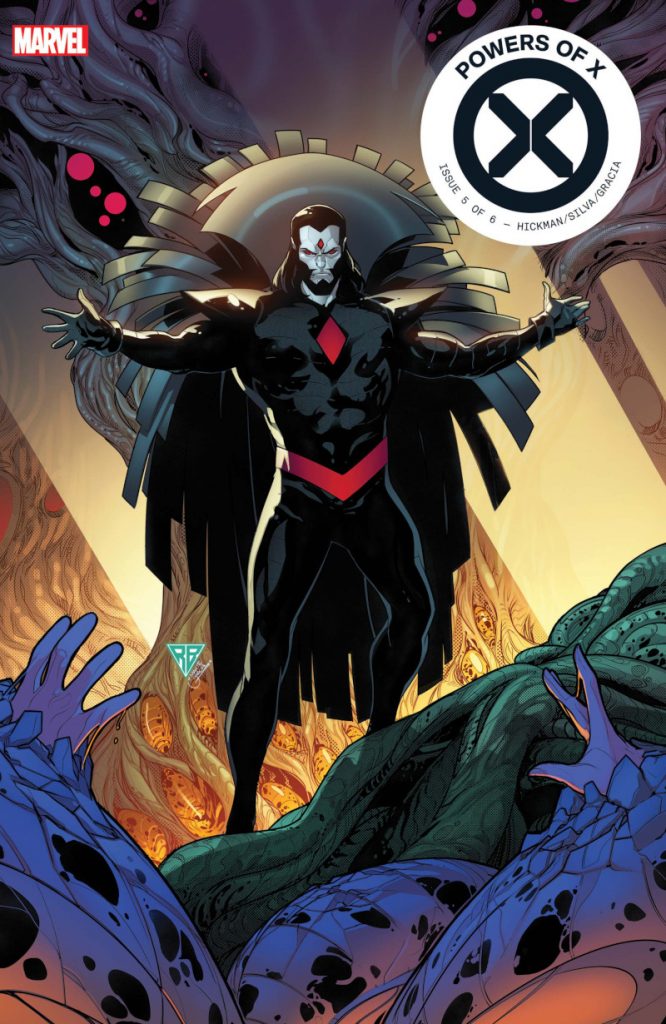
Did releasing these twelve issues as two minis make sense in the end?
When these titles first were announced and then launched, I remember there was a bit of hubbub about these “two series that are one” in regards to whether or not they should really be two minis rather than one collective maxi. After all, they were referential to each other. There was interplay. “Why not just make it one title?” some wondered.
Well, because in the end, these really were two series that were one. While they informed each other and played off each other, House of X was very much its own thing – “a story about a pivotal month in the history of the X-Men where everything changes for mutants on Earth,” as Hickman said before release – while Powers of X was the history of mutants in the Marvel Universe, albeit one from a limited perspective. There was overlap between the two and it really was necessary to read both, but designing this story to be two distinct series absolutely worked and ultimately made for a much more interesting story.
Also, having that distinction allowed for some specific freedoms that were essential to these titles hitting the notes they did. Making them two series allowed Larraz and Silva to have their own domains, with Gracia’s colors unifying them. If one artist tried to do all twelve issues, they’d either be dead or we would have had fill-in artists. It also allowed for each to have their own bents and angles that would have felt schizophrenic if residing within a maxi-series rather than two minis. It was a necessary delineation, even if it was atypical. But hey, maybe it worked that much better because it was atypical.
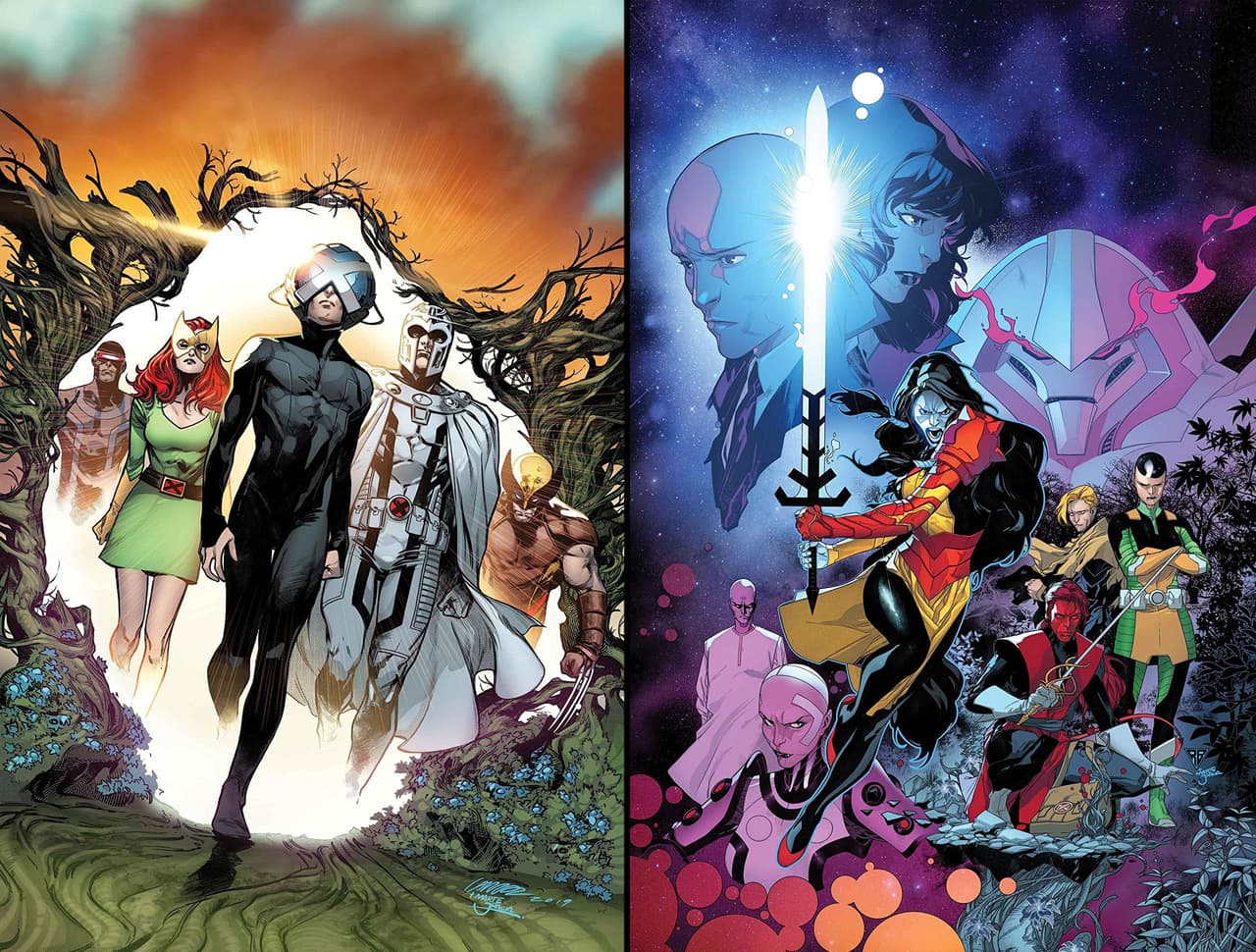
Were House of X and Powers of X as good in the end as they seemed like they could be in the beginning?
At New York Comic Con this year, House of X and Powers of X were big topics of discussion with…well, everyone. And one thing that came up more often than I expected was how interest had waned a bit in the middle/end. 14 While the open was hot fire for these folks I talked to, once the meat of the story was dug into, it just wasn’t getting there for them anymore. There wasn’t as much progress they hoped for, I heard, and it made for a front-heavy read in some people’s minds.
Now this was before House of X #6 and Powers of X #6 could be read by most of these folks, as the former was released as everyone was setting up at the con and the latter arrived the week after. So I’m uncertain as to whether or not the payoff was there for them. 15 But it did make me wonder the question that this write-up is framed around: did these titles live up to the incendiary beginning they provided us?
My take in brief is this: yes.
My take in slightly longer form is that while House of X #1 and #2 and Powers of X #3 were probably the narrative high points, these titles hardly had lulls by any means. Each issue contained at least one wondrously impactful beat, and throughout, the architecture of a new world order for the X-Men was established. The clarity of ideas, the holistic vision and the potent visuals we saw early on were present throughout, with the main thing that shifted being that we went from “asking questions” early on to “answering questions” later in the series.
It was almost like the lifespan of a politician. 16 Early on was all about generating support and big ideas and excitement and enthusiasm. Then it became about governance. About establishment. About reality. These are two sides to the same coin, and for Hickman, Larraz, Silva and the rest to have done their job effectively, we needed both, even if the former is inherently more breathtakingly exciting than the latter.
In the long run, both halves were brilliantly effective at doing what they needed to do, with remarkable ideas, wholesale reinvention of what we thought we already knew, 17 and astonishing art and design existing in each and every entry of the series. There wasn’t a lull as much as there was shifting intent, and that’s an essential difference. The mere act of things happening does not define quality, and my take is the quality didn’t lack one bit. It was just directed at a different objective, which is an important consideration.
To not belabor the point any further, I don’t believe there was a weak issue within the lot, with the worst probably being “very good” instead of the “masterclass level of superhero storytelling” heights we reached on occasion. That makes this 12-pack excellent overall even if the beat drops early on were considerably hotter than the ones later in the series. I’ll take it.
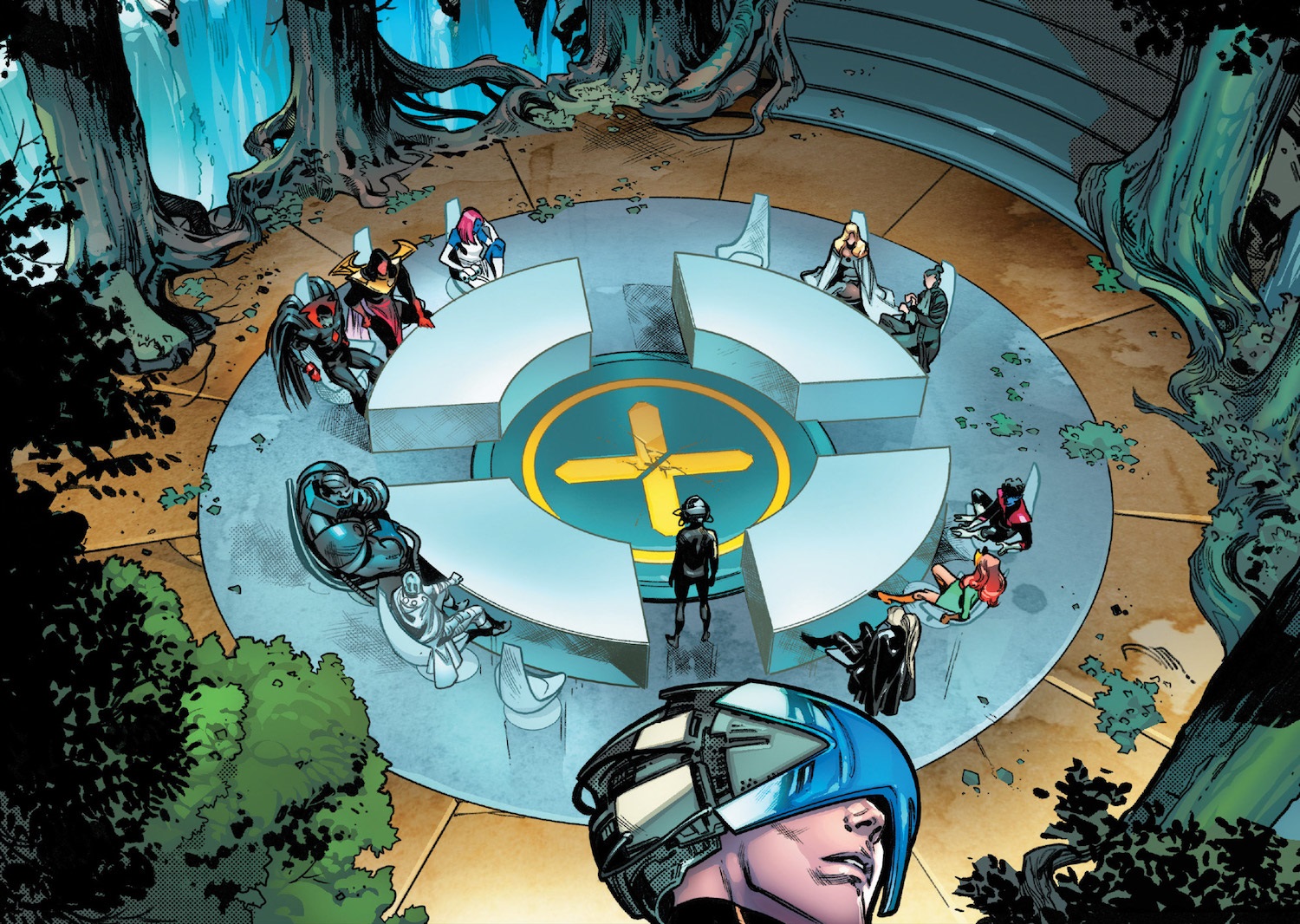
Were House of X and Powers of X successful at what they were trying to do?
If the answer to the previous question was my House of X, then this answer is Powers of X. They’re two answers that are one, because they form the foundation of everything I think about these two titles.
When you consider whether or not House of X and Powers of X succeeded at what they were trying to do, you first have to ask yourself “What were they trying to do?” And above all, it was all about one phrase: tabula rasa. This was a reset, as Hickman cleaned the slate and established a new status quo from which everything would build from here. This was never meant to be a complete story. It was an introduction.
And that matters when you contemplate the relative success of these two titles. You can’t judge it like you would a Secret Wars or an Age of Apocalypse or any other traditional event. Those were conclusions or complete stories. This is preamble, and one designed to build a new version of a world that allows for entry by any who are interested in taking it in.
This makes it doubly fitting that the promotional item for the first issues was a bag of seeds. While that was mostly speaking to Krakoa’s presence and everything that spun from the island that walks like a man, House of X and Powers of X were intended as the seeds from which a better future for Marvel’s mutants and those interested in reading them could grow from. It was a leveling of the playing field, a gateway not unlike Krakoa’s pop up arches that brought those who looking for something more into a new world order. If that’s what these titles were trying to do and I’m not just fictionalizing Hickman’s intent, then I’d say they succeeded in a major way.

Dawn of X is going to be six individual titles. That’s a lot, and there’s more to come. Did House of X and Powers of X establish a need for that many titles?
As noted earlier, I believe a huge part of the success of these two titles was the limited ask they had for readers. Read one title a week. That’s it. Immediately after they’re ending, we’re moving up to six titles for the line, all of which – I believe – are being released at a rate that’s faster than monthly. So we’re going from sipping from a high end wine to chugging from a Bota Box in a snap. That could be a bit intense for readers.
That said, I also noted a key phrase in regards to the format and approach part of that same question: “if there’s a reason for it.” More titles can work, if there’s a reason for it. Too often titles exist just to exist. In this case, I’d say there is a narrative reason for six titles after House of X and Powers of X, or at least for the most part. The position of the flagship X-Men title is obvious, as are those of Marauders, X-Force and New Mutants. The other two are less so, but I will say this: Fallen Angels and Excalibur are at least obviously their own things and not treading on the same ground.
And thats important. Line bloat becomes problematic when it feels like variations on the same formula. Having three Peter Parker-starring Spider-Man titles services one type of reader looking for one type of story, more often than not. But if you have a line of books with complementary objectives all designed to service a larger story, then that’s where the magic happens. That’s what this feels like, even if I believe it could be tough sledding for some of these titles (namely, again, Fallen Angels and Excalibur) to get traction.
Not for me, though. I’ll be reading all six, at least from the start. We’ll see how long that continues on, but consider this reader still onboard the hype train, ready to ride until something goes terribly awry or it all ends. Stay safe, Moira! We’re all rooting for you!
The other three being Xavier, Magneto and Apocalypse, as evidenced by those four being the only people who had open and close quotes besides Namor, and that’s only because Namor cares not for how things are meant to work.↩
Which hardly mattered in the past for the X-Men, but somehow matters less now.↩
More often than not, at least.↩
Warlock.↩
I compared Hickman trying to make the Phalanx an essential element of this story to a master chef trying to make a killer Sloppy Joe’s recipe. I stand by it.↩
Plus they all cancel each other out in terms of ranking.↩
It’s both, but it’s verse not chorus, so it’s not getting stuck in my head.↩
Unless it involves Goldballs.↩
Unless Marvel decides to outsource them like they are their kids comics.↩
And I’m not just talking about the data pages.↩
Pre-hiatus, at least.↩
Related to that: hire Tom Muller more often!↩
i.e. An Arya-centric show, a Jon Snow-centric one, etc. etc.↩
This wasn’t a majority, but still more than I expected.↩
I imagine not given what I wrote about the last issue.↩
An ordinary one, not the clown show ones we see in 2019.↩
Without ever breaking continuity, somehow!↩
